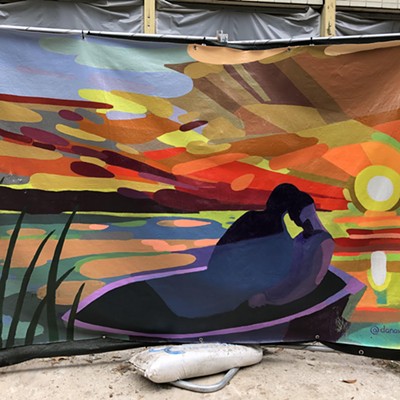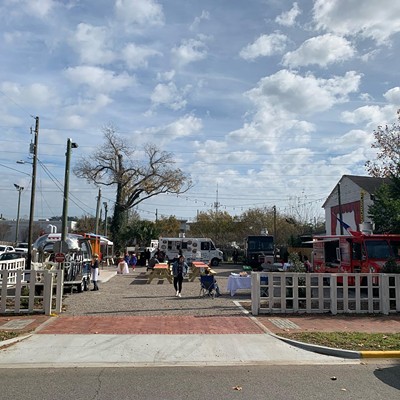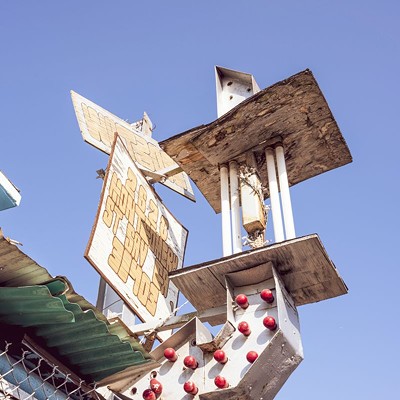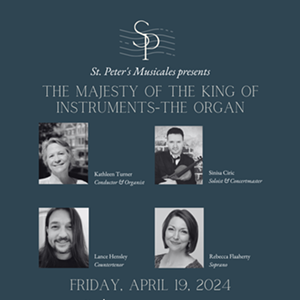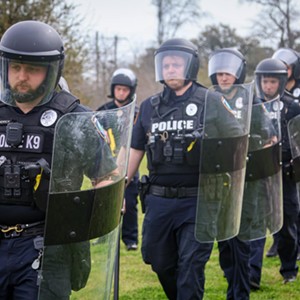THIS PAST weekend the scene in the Starland area was really buzzing, even more than usual.
The block that contains 787 by Chazito’s, Squirrel’s Pizza, and the wonderful new Water Witch Tiki Bar was already slamming by 7:30 p.m.
The nightlife culture in Starland is advanced enough now to have clearly distinguishable waves. You get the early crowd – probably mostly neighborhood folks — then the casual crowd going for drinks after dinner, then the hardcore there late to shut the place down.
Parking, rarely a problem in Starland, was almost difficult – almost.
Hopping a couple of blocks over to Lone Wolf Lounge, all seats were full and the crowd was in full swing.
But just a short drive downtown, in the Historic District, supposedly the “busy” area, you’d see a different story.
You could get a parking spot very close to just about anywhere you wanted to go, if not right in front.
Service staff said it was a slow night, and had been slow all day.
The usual flocks of Woo Girls were nowhere to be seen, nor heard with their distinctive call of the wild. Perhaps they were present in the always-active Congress Street bar corridor.
For a tourism sector that has become more and more dependent on the wedding industry, the Saturday of Jan. 25, 2020, seemed to be a forgettable day on the calendar, unlikely to mark too many wistful anniversaries in the future.
It was, quite frankly, one of those nights where you can’t help wondering to yourself, “Who is staying in all these new hotels? Because nobody’s here.”
I’m exaggerating, of course. There were people downtown enjoying themselves, for sure. But the difference between downtown and Starland was pretty stark.
I expect it’s a difference we might as well get used to.
This is evidence of two things:
1) The undeniable attractiveness of the Starland/Bull Street corridor and the generally high quality of new food and beverage options;
2) The general sense that the Historic District north of Forsyth Park is just not for locals anymore – or if it is, just for the occasional, special trip rather than the casual, spontaneous night out with friends.
We can take note of these two things simultaneously. We can both celebrate the fun and viability of Starland while at the same time decrying the trends which have given so many locals the perception that downtown isn’t for them anymore.
You don’t have to pick one or the other, but increasingly it seems like Starland’s gain is downtown’s loss, and that is the shame of it.
And if – when? – the day comes when Starland is also marketed primarily to tourists, we can reboot this whole discussion.
The cultural transformation of the Historic District into a tourist mecca, while predictable, is a betrayal of what our original town plan is all about.
From the beginning, Savannah’s unique town plan was intended to enhance community among those who resided there.
It was the original “Live/Work/Play” area — a phrase now used to market prefab high-rise apartments which will last maybe a fifth of the life span of a typical Savannah townhome built in the 1800s or early 1900s.
Despite the fancy homes and ornate gardens, up until fairly recently Savannah’s Historic District was a place where regular just-folks could live most of their lives.
Unfortunately, many new arrivals to Savannah don’t have the institutional or collective memory of that time. For them, downtown has always been for tourists, or the very rich.
Even during the deplorable peak of white flight to the suburbs, there was a core group of locals who made downtown Savannah a living, breathing place before the tourist boom, and between booms.
Now, even the rich folks can barely afford homes there. They’ve been priced out by Airbnb investment corporations.
Allowing the Historic District’s residential areas to become de facto commercial property is a mark of shame for all the politicians and mayoral administrations who let it happen, and encouraged it.
So what’s the difference between one historic area and another, you say? Isn’t Starland also a historic area deserving of rehabilitation and enjoyment?
Absolutely it is, and absolutely it does. This is true of any of our remarkable historic neighborhoods in Savannah, many of which have been sadly neglected by politicians and investors and unfairly marginalized by segregationist economic and political policies over the decades.
But the truth is that many cities have charming, historic early 20th century neighborhoods like Starland, which have now become magnets for food/beverage/entertainment options.
Atlanta, Nashville, and Charleston each have several neighborhoods similar to Starland, with a similar mix of entertainment and residential options. In some cases, a virtually indistinguishable mix.
But in all the world, there is only one Savannah Landmark Historic District.
There is literally nothing else like downtown Savannah anywhere. It cannot be replicated, and once it’s gone it will never come back as it was before.
We will continue supporting and championing all the small businesses of Savannah, regardless of neighborhood. But remember that Savannah’s Historic District still belongs to you, and to us.
You don’t have to give it up without a fight.

